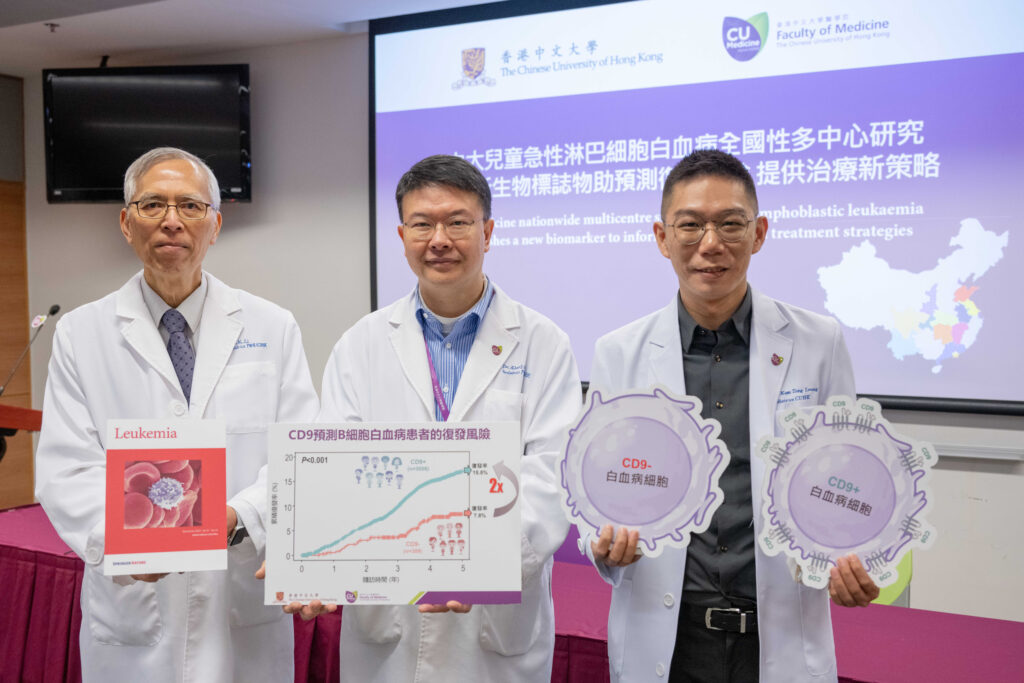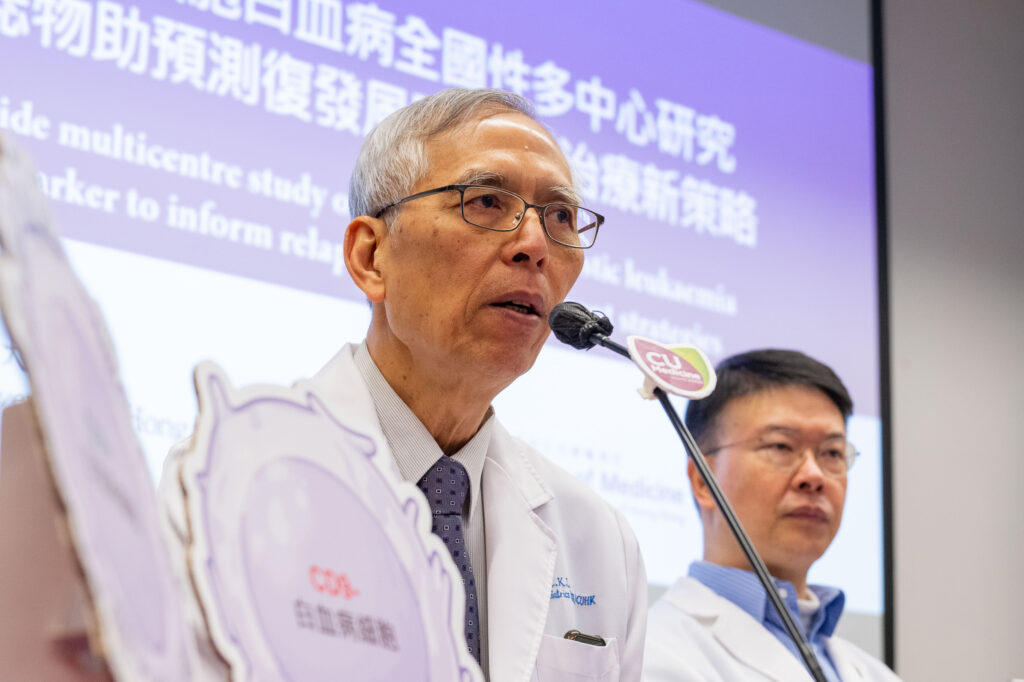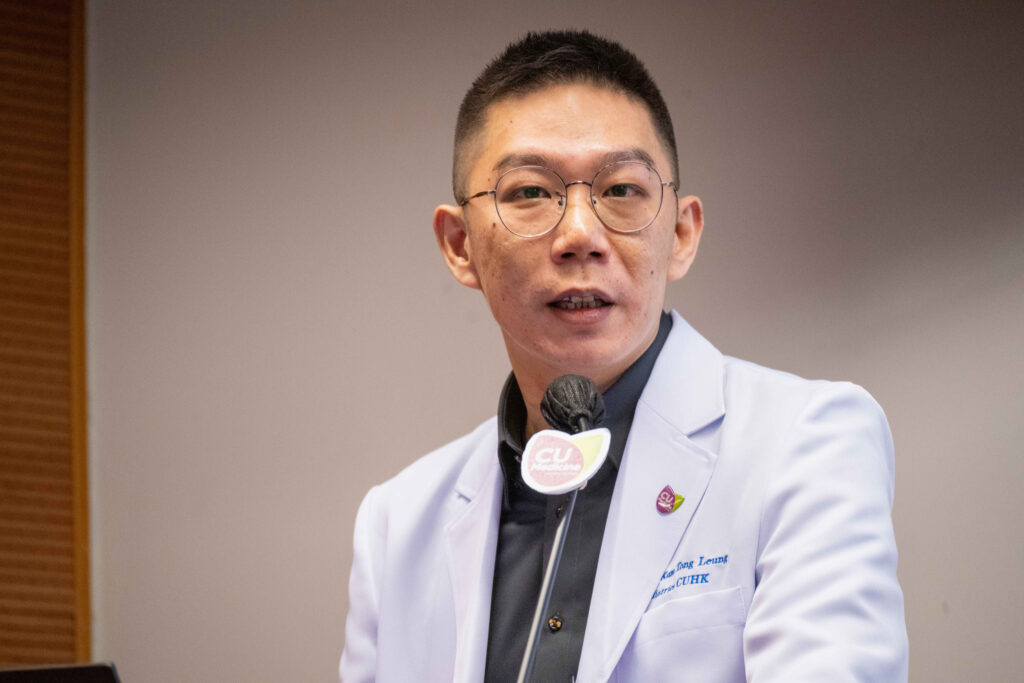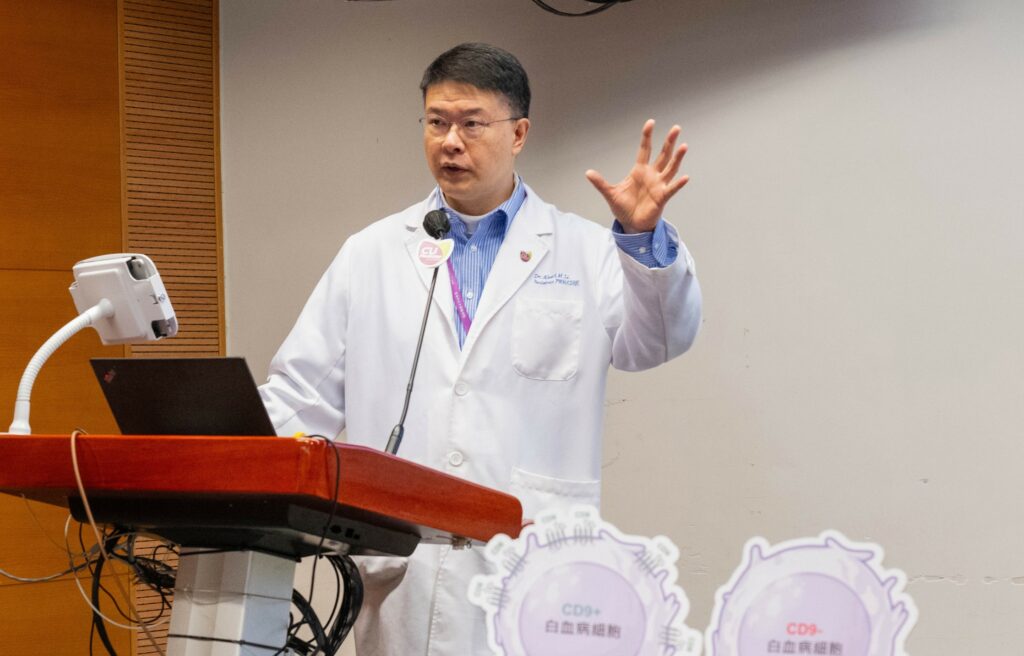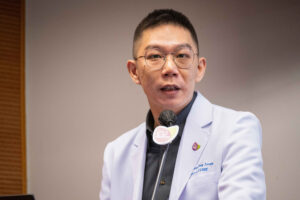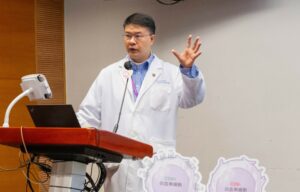CUHK
News Centre
CU Medicine’s nationwide multicentre study on acute lymphoblastic leukaemia establishes a new biomarker to inform relapse risk and treatment strategies
Acute Lymphoblastic Leukaemia (ALL) is the most common cancer in children. Risk-directed therapies are the contemporary protocol for managing childhood ALL, where the treatment intensity is adjusted according to the patient’s risk level to achieve an optimal balance between efficacy and toxicity. While the overall cure rate of ALL has reached 90%, therapeutic responses remain heterogeneous. The Chinese University of Hong Kong (CUHK)’s Faculty of Medicine (CU Medicine) conducted a nationwide, multicentre study on childhood ALL and confirmed that the CD9 protein is highly associated with the prognoses of ALL patients, meaning it can serve as an independent biomarker to predict the risk of relapse and inform appropriate treatment. The findings have been published in the international medical journal Leukemia.
A new prognostic marker to predict treatment outcomes for ALL patients
ALL contributes to 30% of all children’s cancer cases. Among them, 90% are B-cell ALL (B-ALL) and 10% are T-cell ALL (T-ALL). There are around 50 new cases in Hong Kong and 15,000 new cases nationwide each year.
Chemotherapy with or without bone marrow transplantation are the standard treatments for ALL. Based on baseline clinical and pathological features as well as early-stage treatment responses, patients are stratified to receive different treatment intensities, where high-intensity treatments are offered to high-risk patients and vice versa. This approach has made ALL one of the most curable childhood cancers.
Professor Li Chi-kong, Research Professor in the Department of Paediatrics at CU Medicine, said, “Treatment responses vary even for patients belonging to the same risk group. Therefore, we are committed to identifying reliable biomarkers with added prognostic values to refine the current risk stratification system and inform more appropriate therapies.”
CD9 status helps to identify genuinely high-risk patients
A prior single-centre local study conducted by the same CU Medicine research team in 2020 showed the CD9 protein as one potential marker that can indicate the prognosis of childhood ALL. They discovered that B-ALL patients displayed a heterogeneous, subtype-specific CD9 expression. In conjunction with other risk factors, the team found that CD9 expression is highly predictive of relapse. However, a larger-scale study is required to confirm its clinical value.
Professor Leung Kam-tong, Assistant Professor in the Department of Paediatrics at CU Medicine, explained, “CD9 is a cell surface protein. Early studies revealed that CD9 is involved in a variety of cellular activities, such as cell migration, adhesion and differentiation, and its expression has been implicated in the progression of multiple cancers.”
Professor Albert Martin Li, Chairman of the Department of Paediatrics and Director of Hong Kong Hub of Paediatric Excellence (HK HOPE) at CU Medicine, said, “Researchers at HK HOPE have been conducting advanced research on childhood cancers to deliver more effective treatments for difficult cases. The number of childhood ALL cases in mainland China is far more than that in Hong Kong, providing abundant medical data for us to examine the prognostic value of CD9. Our team, therefore, launched a nationwide, multicentre study in 2021, which was the largest in scale of its kind. The study findings will impact future treatment of childhood ALL in Hong Kong, the mainland and around the world.”
To conduct the study, CU Medicine collaborated with a research team led by Shanghai Children’s Medical Centre’s Professor Shen Shuhong and St. Jude Children’s Research Hospital’s Professor Pui Ching-hon. They recruited 3,781 ALL cases from 20 tertiary hospitals across the country. All patients received uniform treatment between 2015 and 2019. The team collected CD9, clinical and pathological data, and conducted a retrospective analysis. The key findings are:
- CD9 was widely expressed in 88.5% of B-ALL patients but only in 27.2% of T-ALL patients.
- CD9-positive B-ALL patients had poorer outcomes than those who were CD9-negative: being CD9-positive conferred a lower five-year event-free survival rate and doubled the risk of relapse. However, the same did not apply to T-ALL patients.
- CD9-positive B-ALL patients in the intermediate/high-risk groups were at a high risk of relapse. Their cumulative incidence of relapse over five years reached 23.1%, whereas that of CD9-negative patients remained low at 10.5%.
- Patients with minimal residual disease after chemotherapy or bearing the BCR-ABL1 aberration, who were concurrently positive for CD9, had a very high relapse risk. Bone marrow transplantation or innovative therapies will be required.
Professor Leung concluded, “Our study proved that CD9 is an excellent biomarker capable of identifying high-risk ALL patients at an early stage, so that doctors can adopt appropriate treatment strategies to lower the risk of relapse and improve their survival. We suggest integrating CD9 into the routine diagnostic tests for childhood ALL. It has profound clinical value and will lead to new guidelines for risk stratification and management of patients suffering from the disease.”
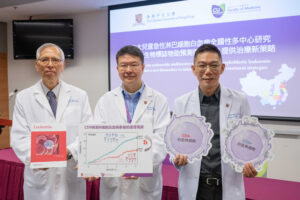
CU Medicine conducted a nationwide, multicentre study on childhood ALL and confirmed that the CD9 protein is highly associated with the prognoses of ALL patients, meaning it can serve as an independent biomarker to predict the risk of relapse and inform appropriate treatment. (From left) Professor Li Chi-kong, Research Professor; Professor Albert Martin Li, Department Chairman and Director of Hong Kong Hub of Paediatric Excellence; and Professor Leung Kam-tong, Assistant Professor in the Department of Paediatrics at CU Medicine.
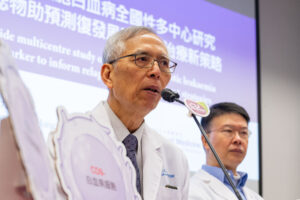
Professor Li Chi-kong says the role of CD9 in risk stratification of ALL patients has just been confirmed. CU Medicine team is now working with mainland counterparts to further investigate on the way to apply this important finding to incorporate into the next clinical protocol.


